
Fall time is winter squash time. Whether you plan to make squash soup, a pie, or pasta, some varieties taste better than others. Here are some of the very best to seek at the market and consider growing in the vegetable garden. Many are beautiful and all have outstanding flavor.
Winter Squash Types
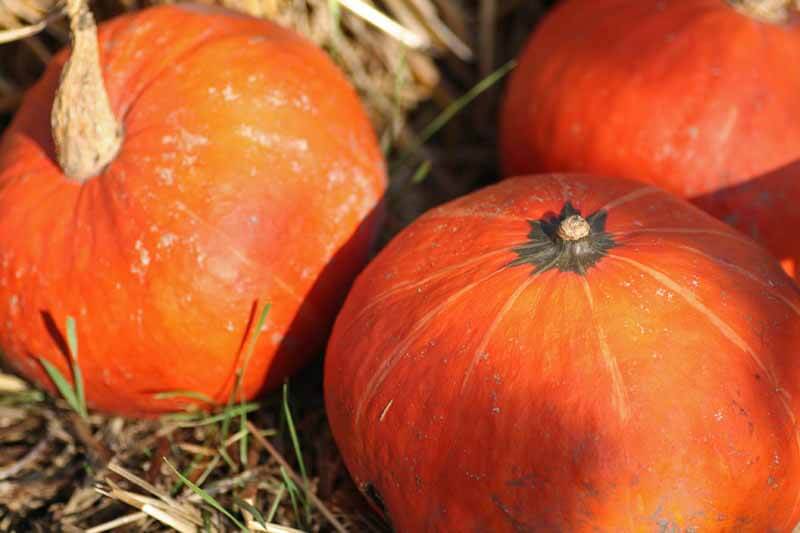
Several of the varieties mentioned were bred outside of North America, but all winter squash originate from the New World. Species were first cultivated by Native Americans and developed over thousands of years. There are three primary culinary species known to cultivation—C. maxima, C. moschata, and C. pepo. True pumpkins and acorn squash are C. pepo, butternut squash are in C. moschata, and turban and kabocha squash are in C. maxima.
Across the board, the winter squash on this list rate at the top for flavor, according to countless formal and informal trials and reviews. Gardeners can be confident in choosing any one, if good taste is what they value in a squash. Most are also high performing in the garden.
Kabocha Squash
Kabocha (C. maxima) are squat, orange, green or gray-green squash that originates from Japan. They have dense, dry flesh that is bright orange. Two of the more common, and nicest tasting are ‘Red Kuri’ (92-100 days) with its orange-red skinned fruits and smooth flesh that is less sweet but nicely flavored, and the gray-skinned ‘Winter Sweet’ (95 days), which has dry, sweet flesh.
Acorn Squash
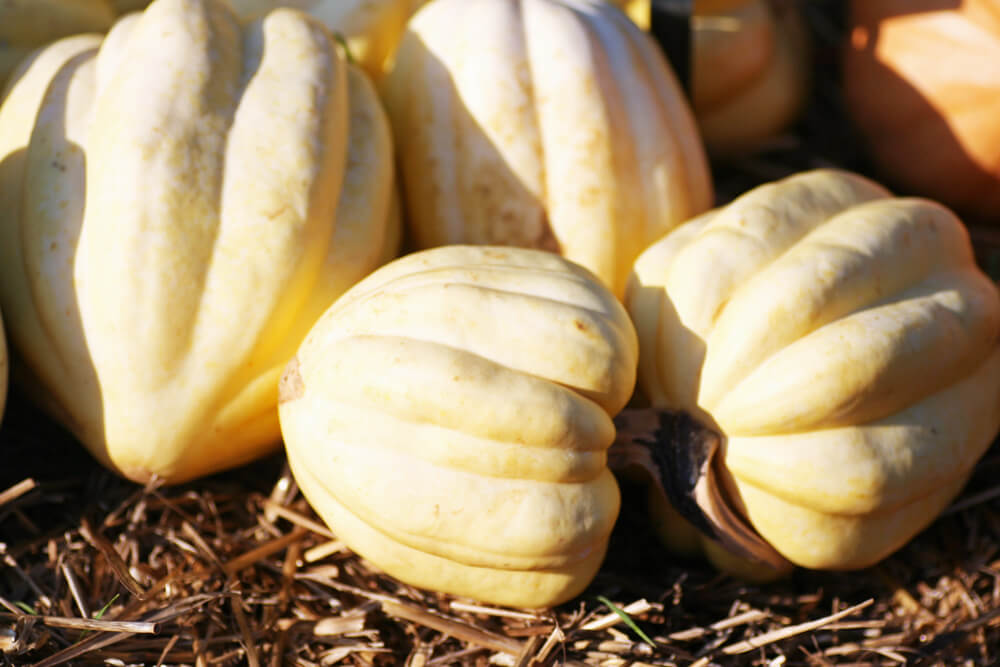
Acorn squash (C. pepo) are wonderfully sweet, deeply lobed, acorn-shaped, and great for roasting. The cream-, gold-, and dark-green-striped cultivar ‘Jester’ (95 days) is just as pretty as it is tasty. Another comparable variety with super sweetness is ‘Sweet Dumpling’ (90-100 days) with its smaller, squatter, ivory and green fruits, and honeyed orange flesh. A less sweet, but colorful, variety is the orange-, cream-, and dark-green-splashed ‘Festival’ (90-100 days). ‘Cream of the Crop’ is a pretty ivory colored variety with good, mild flavor.
Pumpkins
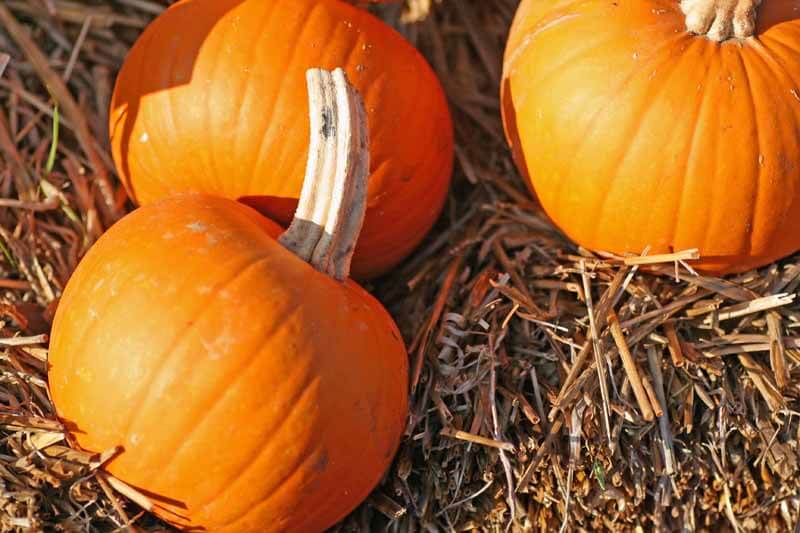
One of the finest pumpkins for pie is the tender-skinned C. pepo ‘Winter Luxury’ (105 days). Each year this variety, and the small, pie pumpkin ‘Baby Pam’ (105 days), are the pumpkins that I choose for making homemade pie. The ‘New England Pie’ pumpkin (105 days) is an old heirloom from the 1800s that is also highly recommended. The unusual, lumpy, blue-gray-skinned C. moschata ‘Marina di Chioggia’ (100 days) is an Italian heirloom turban squash with dense, sugary, orange flesh great for pies, soups, and desserts.
Butternut Squash
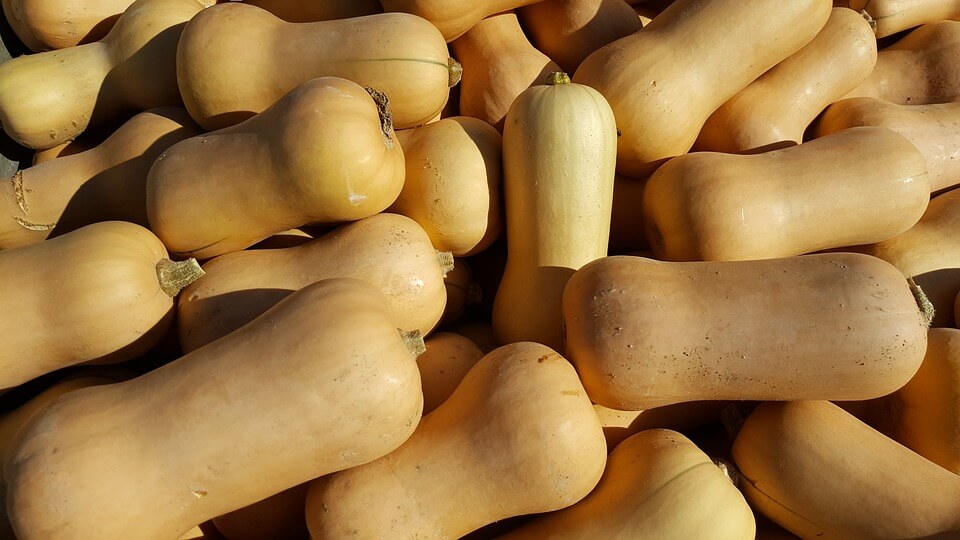
Butternut cultivars are pretty consistent when it comes to flavor. All have richly sweet, nutty flesh favored for all kinds of fall and winter cookery. The compact variety C. moschata ‘Butterbush’ (75 days) is short-vined and bears small butternut squash that are dark orange, dense and very sweet on the inside. Vines are quite productive and early to bear.
Other Winter Squash Types
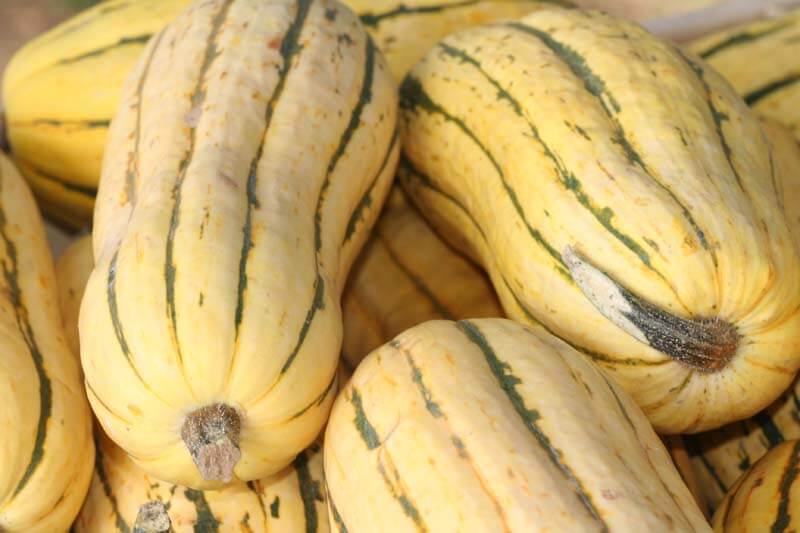
The cream- and green-striped, elongated fruits of Cucurbita pepo ‘Delicata JS’ (100 days) are thin-walled and have sweet, nutty, golden flesh. The small, ornamental fruits of ‘Sweet Lightning’ (100 days) look like tiny pumpkins striped with cream. Its sweet, stringless, pale orange flesh is said to be even better tasting than that of ‘Delicata JS’.
Cultivating Winter Squash
Winter squashes need to be started in spring for fall harvest. Be sure to plant them outdoors after the threat of frost has passed. It pays to plant them on berms (click here to read all about berming) amended with lots of organic matter. Fafard Premium Natural & Organic Compost, and Fafard Garden Manure Blend are recommended for spring soil enrichment.
Full sun and space are essential for these sprawling, vining plants. Many may require as much as a 12’ to 15’ patch to grow to their fullest. You will know the fruits are ready to harvest when they are hard, have full color, and their supporting vines start to wither.
Winter Squash Pests and Diseases
There are several pests and diseases that cause squash vines real trouble. Powdery mildew is a common fungal disease that damages leaves and gives then a white, dusty appearance. (Click here to learn how to manage powdery mildew.) Squash vine borers bore into vines and cause them to quickly wilt and die. (Click here to learn how to manage squash vine borers.)
By fall, you should be able to find these squash at farmer’s markets and orchards. You might also consider planting one or two in your garden next year.








